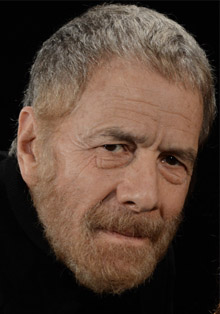Pedro Zavala Yesan
Lawyer and collaborator of Fundación Alternativas
In Peru, the political situation seems to be gradually stabilizing after several months of tension. In recent weeks, former president Pedro Castillo has denounced that his detention is illegal and that he should be reinstated in office, forgetting the rupture of the constitutional order he caused in December 2022. Along with the position of former president Castillo, countries such as Colombia and Mexico showed their support for him, and in some cases such as Mexico, such support consisted of concrete actions such as asylum for his relatives and the rejection of the handover of the pro tempore presidency of the Pacific Alliance group, which triggered a diplomatic letter of protest and the withdrawal of the Peruvian ambassador in Mexico.
On the other hand, the strikes at the beginning of the year were constant and with considerable support from the citizens of the south, center and part of the north of the coast and highlands, with the slogan: resignation of President Dina Boluarte, the closure of Congress, early elections and the establishment of a constituent assembly for a new Constitution. However, the strikes, little by little, have been losing support from different sectors of society, ending the protests in important provinces such as Ica, Arequipa or Cuzco. In January, an attempt was made to transfer the strikes from the south to the capital of Peru, with the so-called ‘Toma de Lima’, which after a few weeks of marches did not achieve any major results. In February, in the same way, another general strike was attempted with the ‘Second Seizure of Lima’, which had a much lesser effect than the first attempt.
In the provinces, the northern coastal area, since the beginning of the demonstrations, has had no greater participation, and continues to do so; meanwhile, in the south, several provinces that had been holding violent demonstrations have been losing citizen participation, as in the case of Arequipa, Ica and Cuzco. The Puno region is the only one that so far continues with demonstrations and measures of force. The lack of support for the revolts and the proposals that were being put forward have been put on the back burner. The only initiative that had more acceptance was that of bringing forward the elections, but at this moment it has not been ratified by the Congress, and leaving a hint that there is no intention of carrying it out. The House, moreover, currently has a 90% disapproval rating.
The failure of the mobilizations and demonstrations in the provinces and the capital is linked to the lack of leadership and order of the opposition, a discourse that was not clear in terms of its request, as well as not very technical, among other aspects. In the last two weeks, cyclone Yaku is hitting the Peruvian coast, starting from the north of the country in Tumbes, and is moving south to Lima, where it is expected to arrive in the next few days. The weather event has been a relief in the political confrontation we are in, diverting the attention that was on the issue. Finally, international organizations such as the OAS and the UN continue to ask for explanations from the Government regarding the 63 deaths that occurred during the past demonstrations, without a clear answer on the subject.
In this context, the social situation in Peru is relatively calm. With the stabilization of the price of the dollar, as well as fuel prices, economic activities are gradually resuming in the different provinces of the country, and it is beginning to be perceived that the demonstrations and the airs of change are gradually being overcome.
© Fundación Alternativas / All rights reserved






